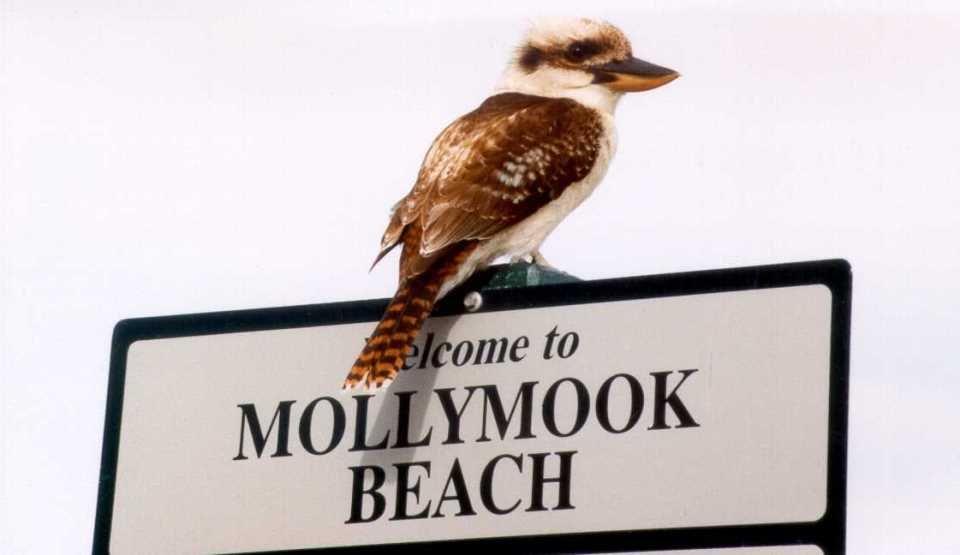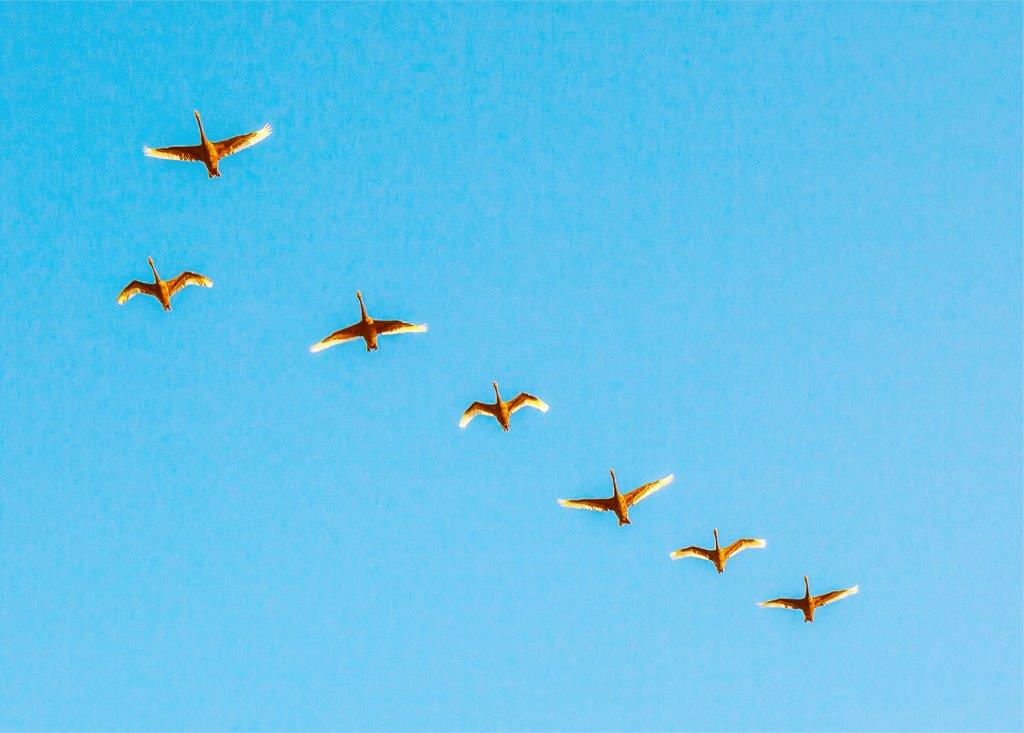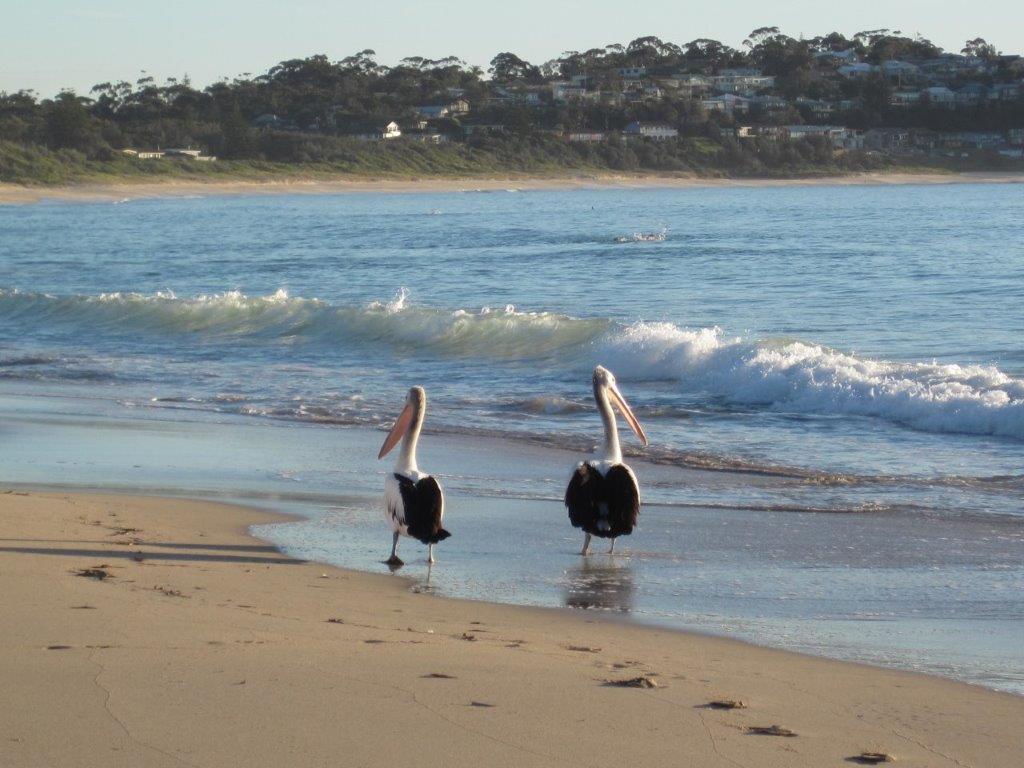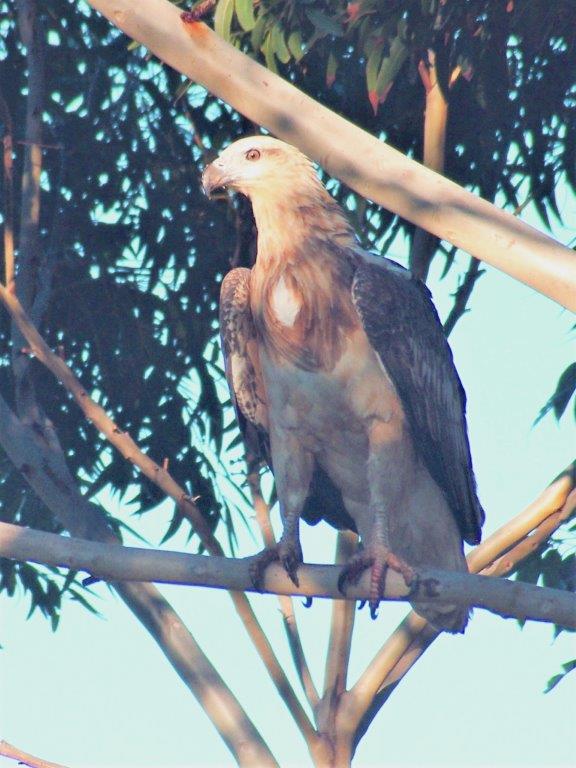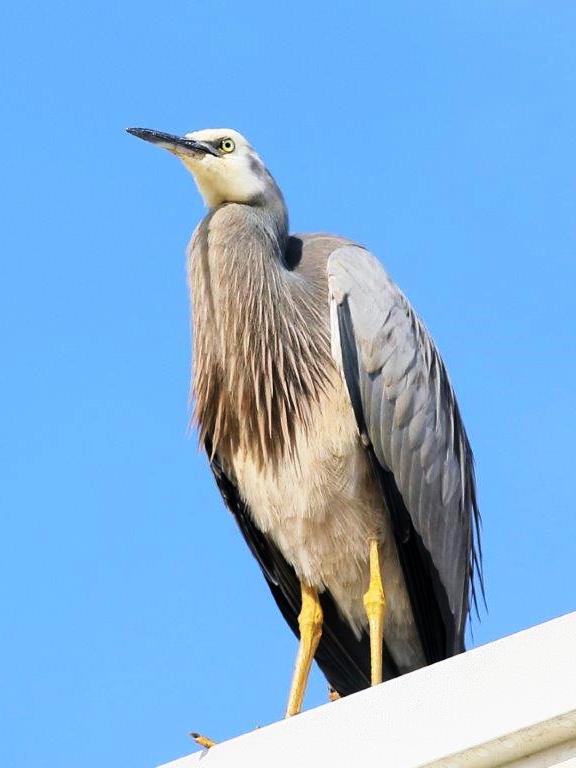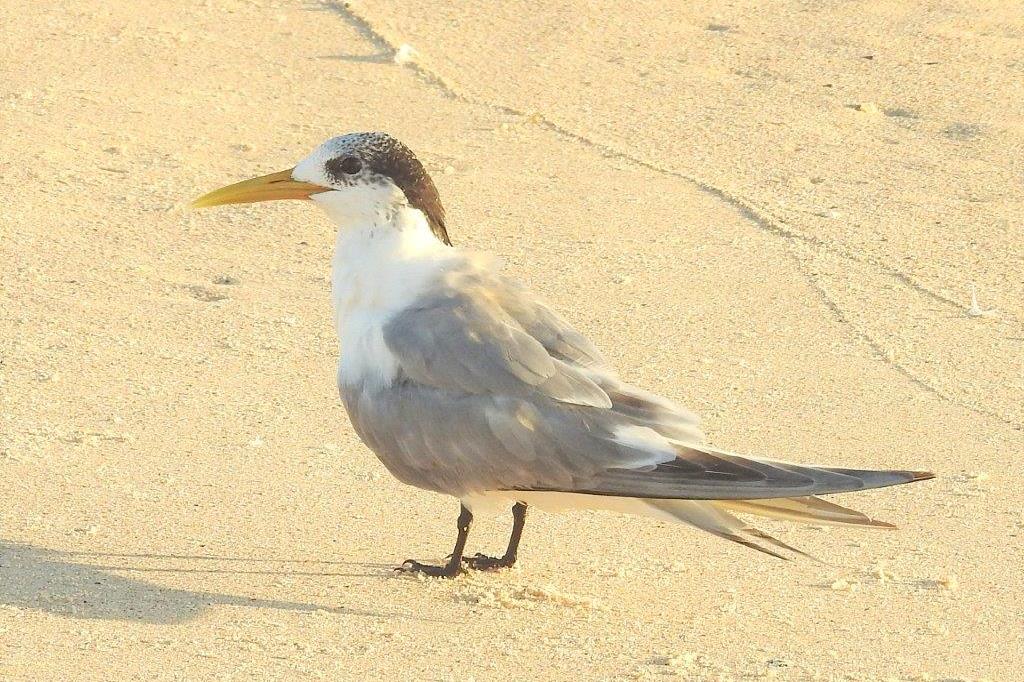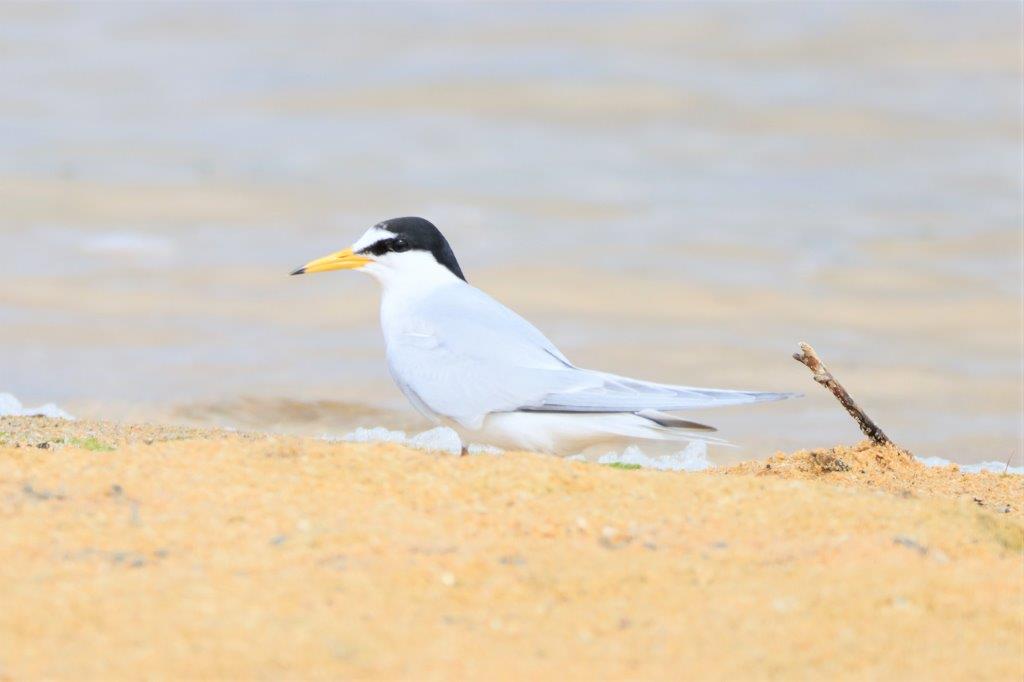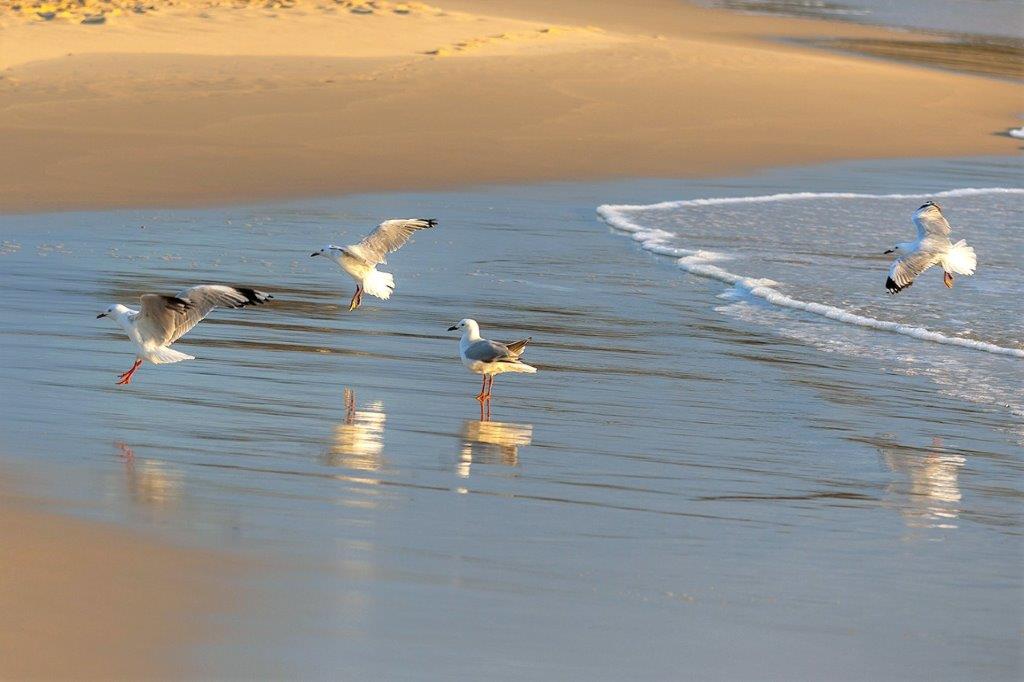BIRD LIFE MOLLYMOOK BEACH
Possibly Australia’s most iconic species. It’s incredible laughing song, (raucous cackle) is a feature of the dawn chorus. If a few birds join the chorus, it becomes quite a racket. It is one of the larger members of the Kingfisher family.
Laughing Kookaburra. Poem by Louisa Anne Meredith (1812 – 1895)
|
Two large great birds sit up in a tree, And they look as solemn as birds can be, With very big beaks, and half shut eyes – Did you ever see anything look so wise? Hark! All on a sudden one of the them Bursts out laughing! ‘Ha, ha! Ho heel! |
The other wakes up and opens his bill, And his eyes are opening wider still, He gives his feathers a shimmer and shake Just to be sure that he’s wide awake, And then, as if some funny thing he saw, Joins chorus, with ‘Ho, ho, ho! Ha! haw!’ |
‘Why are they staring so?’ See – there is a black snake down below! Gliding along thro’ the dry brown grass – But not very far will his safety pass; Those solemn old birds are watching him go, And chuckle for joy – ‘Ha Ho! Ho Ho!’ |
Scroll down for more ‘Mollymook Beach’ bird species. Credits: Photo’s, Ken Banks. Mentor, Charles D. Commentary, Australian Birdlife
****************************
Australian Pelican
This iconic Australian species is found across the continent. Pelicans can soar for very long periods, covering hundreds of kilometers and flying to heights of 3,000 metres. They can reach air speeds of up to 56 km / hour.
It has a bill of 40 – 50 cm long and can hold up to 13 litres. The bill is sensitive and this helps locate fish in murky water. It also has a hook at the end of the upper mandible, probably for gripping slippery food items. When the food is caught, the pelican manipulates it in its bill until the prey typically has its head pointing down the pelican’s throat. Then with a jerk of the head the pelican swallows the prey. Pelicans have a wing span of 2.3 – 2.5 metres, can weigh 4 – 8 kilograms and live for 15 – 25 years.
Where the Pelican Builds Poem by Mary Hannay Foott (1846 – 1918)
|
The horses were ready, the rails were down, But the riders lingered still – One had a parting word to say, And one had his pipe to fill. Then they mounted, one with a granted prayer, And one with a grief unguessed. ‘We are going,’ they said, as they rode away – ‘Where the pelican builds her nest!’ |
They had told us of pastures wide and green, To be sought past the sunset’s glow; Of rifts in the ranges by opal lit; And gold ‘neath the river’s flow. And thirst and hunger were banished words When they spoke of that unknown west; No drought they dreaded, no flood they feared, Where the pelican builds her nest! |
The creek at the ford was but fetlock deep When we watched them crossing there; The rains have replenished it thrice since then, And thrice has the rock lain bare. But the waters of hope have flowed and fled, And never from blue hill’s breast Come back – by the sun and the sands devoured – Where the pelican builds her nest! |
White Bellied Sea Eagle juv. @ Mollymook Beach
Few Australian birds of prey are as spectacular as the White-bellied Sea-Eagle. Although it is similar in shape to the well-known Wedge-tailed Eagle, and almost as large, the sea-eagle is readily distinguished by its contrasting crisp-white and ashy-grey plumage, which adds to its striking appearance as it soars effortlessly on broad wings.
White Faced Heron at Mollymook Beach
The White-faced Heron is particularly versatile. It can be seen in many different wetland habitats: they occur on reefs, in rock pools and mudflats by the coast, in estuaries and saltmarsh, swamps, rivers, drains and at farm dams; they even occur in pasture and hypersaline wetlands.
Crested Tern @ Mollymook Beach
Crested Tern. There are few stretches of the Australian coastline where the Crested Tern cannot be seen. They are the second largest of the terns found in Australia and one of the most commonly seen species. They breed in colonies on small offshore islands where their nests are so densely packed together that adjacent owners can touch each other’s bills.
Little Tern at Mollymook Beach
Little Terns forage by plunging into shallow water, taking small fish from (or just below) the water’s surface. They mate for life which is quite a commitment as they live up to 25 years. They make little scrapes in the sand, throw in a bit of seaweed and lay their extremely vulnerable eggs.
Masked Lapwing @ Mollymook Beach
The Masked Lapwing is sometimes referred to as the Spur-winged Plover because each of its wings is armed with a yellow spur at the ‘elbow’ (or carpal joint). Lapwings use these spurs when (fly) diving at potential predators or intruders during breeding season, while chicks are running around or when the eggs are just about to hatch. While these attacks are quite unnerving, the birds seldom actually strike their ‘victims’, preferring a close approach to scare them away.
Ken B., Mollymook Beach Waterfront: Editor for Mollymook News and Destination Mollymook Milton Ulladulla

